





Cyst of strobiloid gland
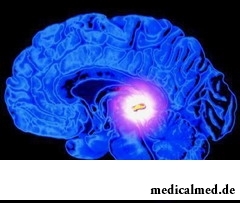 Cyst of strobiloid gland – the hollow education filled with liquid, forming in one of shares of strobiloid gland.
Cyst of strobiloid gland – the hollow education filled with liquid, forming in one of shares of strobiloid gland.
Epiphysis or strobiloid gland – structure of a brain, the small, unpaired body performing endocrine function. Strobiloid gland represents the small formation of gray-red color located between cerebral hemispheres in the place of an interthalamic union. Outside of iron it is covered with a joint capsule. Functions of strobiloid gland are still not studied thoroughly owing to its small sizes, features of an arrangement and communication with other structures of a brain. However it is established that gland is directly involved in regulation of circadian rhythms (a dream – wakefulness). It is known also that the epiphysis produces melatonin. Carry to functions of strobiloid gland:
- Delay of a producing growth hormone;
- Puberty process regulation, change of a sexual behavior;
- Growth inhibition of new growths.
The cyst of strobiloid gland is the high-quality education which is not developing into a malignant tumor. A cyst strobiloid железыв a brain – the phenomenon rather rare. Cystous education is diagnosed only for 1,5% of patients with brain diseases. Cystous formations of strobiloid gland are seldom characterized by dynamic growth. Cystous education does not affect functioning of strobiloid gland, extremely seldom makes impact on adjacent structures of a brain, breaking their function.
Cyst of strobiloid gland of a brain: development reasons
Strobiloid a zhelezygolovny brain are the main reasons for development of cysts:
- Obstruction of the removing channel owing to what outflow of the melatonin produced by gland is broken. At obstruction of the removing channel there is an accumulation of a secret;
- Echinococcosis – the helminthosis provoking formation of parasitic cysts in various bodies. In other words, defeat of strobiloid gland the echinococcus getting to gland with a blood flow. The parasite forms the echinococcal capsule, protecting himself from the immune attacks of an organism. The pinus cyst formed by an echinococcus cover is filled with waste products of a parasite, can increase a little in sizes.
Owing to the fact that this structure of a brain is poorly studied other causes of formation of cysts of strobiloid gland of a brain still remain not established. Also this results from the fact that education and development of a cyst of strobiloid gland proceeds almost asymptomatically.
Cyst of strobiloid gland: disease symptoms
At development of a cyst of strobiloid gland symptoms, as a rule, are not shown. Causeless headaches which are difficult for associating with other factors, such as a stress, overfatigue, pressure become the main complaint of patients. Cystous education is diagnosed in a random way at inspection of a brain by means of MRT. At most of patients with the diagnosed cyst of strobiloid gland symptoms were absent or had the general character for a number of diseases of a brain:
- The headache which is not caused by other factors, arising irregularly and unjustly;
- Disturbance of visual function (in most cases patients note doubling in eyes, degradation of the picture);
- Lack of coordination of movements, gait;
- The nausea, vomiting provoked by attacks of a severe headache;
- The hydrocephaly developing owing to compression by a cyst of strobiloid gland of a channel of a brain and disturbance of current of cerebrospinal fluid.
Expressiveness of symptomatology at cystous formations of strobiloid gland completely depends on the amount of education and rendering pressure upon other sites of a brain. At achievement by formation of the critical sizes the cyst can block completely current of cerebrospinal fluid that can have extremely negative effects for all organism.
The symptoms caused by a cyst 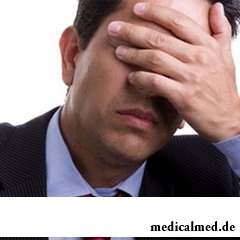 of strobiloid gland of a parasitic etiology will have a bit different character. The overall clinical picture at an echinococcal cyst will be added a number of mental disorders: depression, weak-mindedness, crazy states. Epileptic seizures are in rare instances observed. At the progressing cyst of a pinus increase of focal symptomatology, increase in arterial pressure will be observed.
of strobiloid gland of a parasitic etiology will have a bit different character. The overall clinical picture at an echinococcal cyst will be added a number of mental disorders: depression, weak-mindedness, crazy states. Epileptic seizures are in rare instances observed. At the progressing cyst of a pinus increase of focal symptomatology, increase in arterial pressure will be observed.
Cyst of strobiloid gland: risks and forecasts
The main risk at formation of a cyst of a pinus at the person is the high probability of development of hydrocephaly – brain dropsy owing to accumulation of cerebrospinal liquid in ventricular departments of a brain. However pinus cysts are, as a rule, not dynamic. That is the formed cyst does not affect functioning of departments of a brain in any way. Continuous monitoring of cystous education will allow to prevent its further development.
The greatest risk at diagnosis of cystous formations of strobiloid gland is statement of the false diagnosis and purpose of inefficient treatment or carrying out unnecessary surgical intervention.
Cyst of strobiloid gland: treatment
At detection of a cyst of strobiloid gland treatment, as a rule, is not required. In most cases even MRT scanning can not give clear idea of the cyst nature. For confirmation of the diagnosis resort to a biopsy and a laboratory research of a bioptat on existence of cancer cells, and also for clarification of an etiology of a cyst. Cystous education strobiloid zhelezydolzhno to be differentiated with brain tumors.
The cyst of a shishkovidnogotel of a brain will not respond to conservative drug treatment. Cystous formations of strobiloid gland of an echinococcal etiology will respond to drug treatment at early stages. At the big sizes of a cyst of strobiloid gland treatment is supposed only surgical. Indications to performing surgery are:
- Expressiveness of symptomatology;
- The increased risk of development of hydrocephaly;
- Influence of a cyst on functioning of cardiovascular system, rendering impact on adjacent structures of a brain.
Now factors which can provoke growth of a cyst of strobiloid gland are unknown. Carrying out surgical intervention bears certain risks for the patient. Today doctors agree in a consensus about need of constant control of a condition of strobiloid gland and the cystous education provoked by obstruction of the removing channel. For observation of dynamics of a cyst it is necessary to carry out MRT-monitoring of 1 times in 6 months. When diagnosing the cyst caused by an echinococcosis the decision on removal of a bubble in most cases is made. In cases of pronounced symptomatology and lack of other indications to carrying out surgical intervention to patients drug treatment for stopping of symptoms is appointed.
Each person has not only unique fingerprints, but also language.

Olive oil – the product capable to make a powerful contribution to health of the person if it includes it in the diet. Rich vitamin...
Section: Articles about health
The name of this disease precisely reflects the problem reason: it consists in the bra fastener pressure upon a certain zone of a back. At the same time one of vertebrae of chest department of a backbone is as if blocked and loses mobility, and falling on it is nude...
Section: Articles about health
For the help to doctors in the choice of optimal solutions for treatment of various diseases the Cochrane scientific organization (Cochrane) conducts joint researches with representatives of scientific community around the world. The analysis of a series of the conducted researches of the drug Oscillococcinum® relating to group of cold remedies became one of the last methanolyses....
Section: Articles about health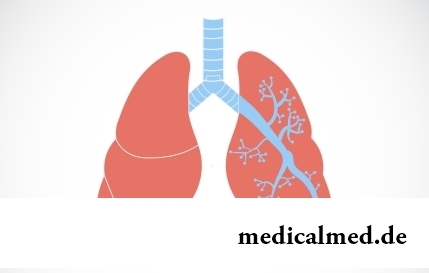
They say that to ensure health and longevity of people it is obliged. Really, at competent approach to these questions, we will pass...
Section: Articles about health
All are familiar with cold, and practically everyone believes that he has sufficient knowledge and experience that correctly to treat it. In practice most of people makes mistakes in attempts to get rid of rhinitis, and divides numerous delusions it....
Section: Articles about health
The drugs stopping or oppressing life activity of pathogenic microorganisms are widely applied in clinical practice from 40th years of the last century. Originally antibiotics were called only substances natural (animal, vegetable or microbic) origins, but over time this concept extended, and it includes also semi-synthetic and completely artificial antibacterial drugs....
Section: Articles about health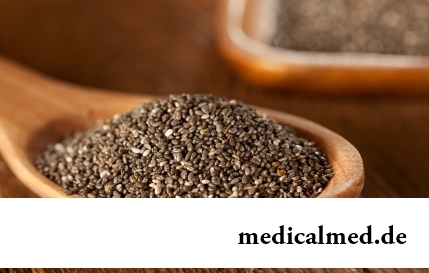
The chia plant, or the Spanish sage, is from South America. The indigenous people of the continent since ancient times used in food it семена:...
Section: Articles about health
The advantage of swimming for the person is so high that this sport is not only the most popular, but also is widely applied in medicine and rehabilitation processes. If you look for for yourself the occupation allowing pleasantly and to spend time, then swimming with advantage...
Section: Slideshow
Striya (extension) are the defects of skin having an appearance of direct or wavy strips from 1 to 10 cm long and 1-5 mm wide. In most cases at women of a striya are located on a stomach, hips, a breast or buttocks. At athletes they can appear on shoulders and the internal surface of forearms. At initial stages of development of an extension have red or lilac color, but over time their coloring turns pale, and strips become whitish, getting a nacreous shade....
Section: Articles about health
Statistically, pathologies of a thyroid gland in the world more than 500 million people have. Failures in work of this body conduct to is heavy...
Section: Articles about health
What will only not be thought up by persons interested to have a beautiful figure. Here the last innovation – for weight loss needs to be eaten greasy food. Let's understand whether there is at a fatty diet common sense....
Section: Slideshow
Smack in a mouth can arise in the natural way – as a result of lack of morning hygiene or reception of the corresponding food. However in certain cases its existence is a sign of certain pathologies, and allows to reveal an illness at an early stage. Depending on character of aftertaste – acid, salty, bitter, sweet – distinguish also diseases which accompany it....
Section: Articles about health
Osteoporosis this general disease which main sign is decrease in density of a bone tissue. On width распростран...
Section: Articles about health
The sudden heat on all body which is followed by perspiration and a cardiopalmus – the phenomenon familiar to many people. Most often such states called by "inflows" result from nervous or physical overworks and disappear right after rest. Odn...
Section: Articles about health
Statistically, in Russia about 34% of citizens smoke. Most of consumers of tobacco has problems with health sooner or later. Not only smokers, but also their relatives suffer. Besides, cigarettes are expensive, and need of their acquisition goes a heavy burden on the budget of thousands of Russian families. Many people dream to refuse harmful tendency, but everyone manages to make it not: nicotine addiction is affectionate and to get rid of it not easy....
Section: Articles about health
Musicotherapy – a treatment method which caused and causes a set of a controversy concerning its efficiency. However the facts are relentless:...
Section: Articles about health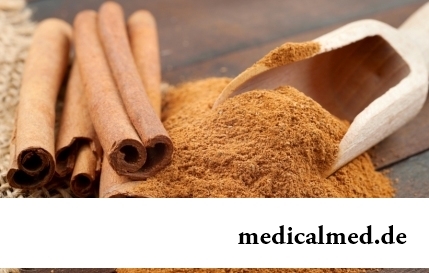
Ayurveda - the most ancient tselitelsky practice which came to us from India. It represents the doctrine about maintenance of physical, psychological and moral health of the person by means of the complex of procedures including a diet, cleaning of an organism, respiratory упр...
Section: Articles about health
Extracorporal fertilization – one of the most modern methods of controlling with infertility. So far he already helped a significant amount of married couples to become happy parents. Usually to the EKO procedure difficult and very expensive, resort in those situations when all other ways to help couple to bring the child are inefficient. "Conception in a test tube" yields quite good results in cases of infertility of one of partners, existence at the woman of impassability of uterine tubes...
Section: Articles about health
Quite large number of people adheres to the principles of vegetarian food. But how to be if in a family of vegetarians is д...
Section: Articles about health
Deciding to get rid of an addiction, not all imagine what effects it is necessary to face. Process of refusal of smoking causes quite essential discomfort in most of people: differences of mood, sleep disorder, fatigue, decrease физич...
Section: Articles about health
It would seem, about it there can be no disagreements: water is necessary for a human body for normal life activity, and about how and when it should be drunk, all know. It turned out that the situation is not absolutely so: for many years there are very persistent delusions connected with this question. Let's consider the most widespread of them....
Section: Articles about health
Each failure in work of bodies and systems of a human body is, as a rule, shown by the whole complex of symptoms. In particular, N...
Section: Articles about health
The mankind knows that some toxins at intake in the minimum quantities have therapeutic effect from an extreme antiquity. Many substances recognized poisonous are applied in the medical purposes also today, being the main deystvuyushch...
Section: Articles about health
The cosmetics intended for improvement of a condition of skin, nails and hair are used by each woman. Expenses on regular acquisition of the fashionable widely advertized products of well-known companies for many become very notable and significantly burden the family budget. Meanwhile, there is a number of inexpensive pharmaceutical drugs which can quite be applied in the cosmetic purposes. At the same time the effect of their use is often more noticeable, than result of use of the most expensive...
Section: Articles about health
Bulimia and anorexia, are heavy deviations of a feeding behavior, become a cause of death of patients much more often than all others...
Section: Articles about health
For anybody not a secret that our country is one of the most "drinking" in the world. At clear understanding that the use of hard alcoholic drinks – occupation extremely harmful, most of Russians belong to alcoholism with unjustified loyalty. These...
Section: Articles about health
The winter swimming in open reservoirs called in our country by "winter swimming" – officially recognized sport and one of the most extreme ways of a hardening of an organism. This occupation has an old story and adherents in many countries. The international competitions in winter heats on open water, and every two years – the World Cup are annually held. Despite huge popularity and the proved advantage for health, winter swimming is still surrounded with hardy delusions. Ра...
Section: Articles about health
